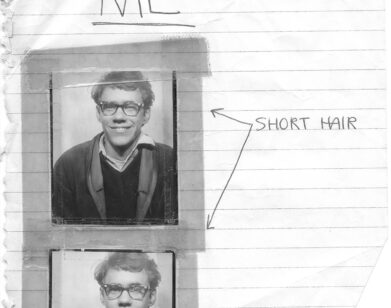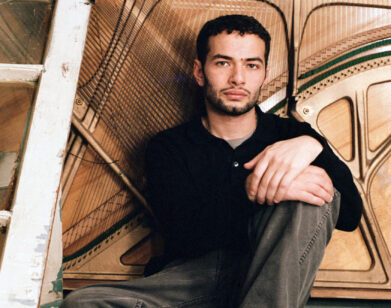In Between but Not Compromising

COVER COURTESY STEIDLDANGIN
In the winter of 1954, an emerging photographer by the name of Guy Bourdin landed his first assignment for French Vogue: a fashion story involving hats. One of the images he created for this series is a perfectly preened model, gloved-hand on the brim of her veiled head, poised beneath the heads of three skinned calves, lifeless tongues dangling above. In another, similar image for French Vogue, a model wears a Balenciaga chapeau adorned with fruit, flowers, and fragile black netting. Beneath her lovely face we see flies on her skin—bees, too—to complete and confuse the morbid metaphor; the constant play in Bourdin’s work that straddles death and desire, the grotesque glazed over with shiny gloss.
Guy Bourdin: In Between (steidldangin) is an ambitious, and all together brilliant execution of bringing together these editorials for French Vogue, as well those completed for British Vogue, Harper’s Bazaar, and advertising clients like Charles Jourdan, often reassembling the original editorial layouts as they were first published, as spreads. The layout extends Bourdin’s ideas—a creative process in which Bourdin insisted on, and was granted, complete control; he refused to work with magazines or clients who worked otherwise. Ultimately this allowed him to take the stories further, conceptually and graphically.
Residual resentment and childhood scars left unhealed from his mother’s early abandonment, permeate Bourdin’s work is unsettling ways. Women typically appear objectified and certainly compromised, or employed in the roles of housemaid or mistress. Pre-pubescent girls are photographed as if they were grown women, with full makeup-like masks on their lineless faces, and naked chests covered in diamonds and gems. This fetishism and sexual violence riddles his images, and teeters on the precipice of acceptable and outrageous, of irreverent and offensive, of imaginative, and just plain obscene—each tableau is heavily produced and manufactured to illustrate the picture in Bourdin’s head, with no serendipity in his process. Did he love women or did he hate them? It is often hard to tell, in spite of his efforts.






